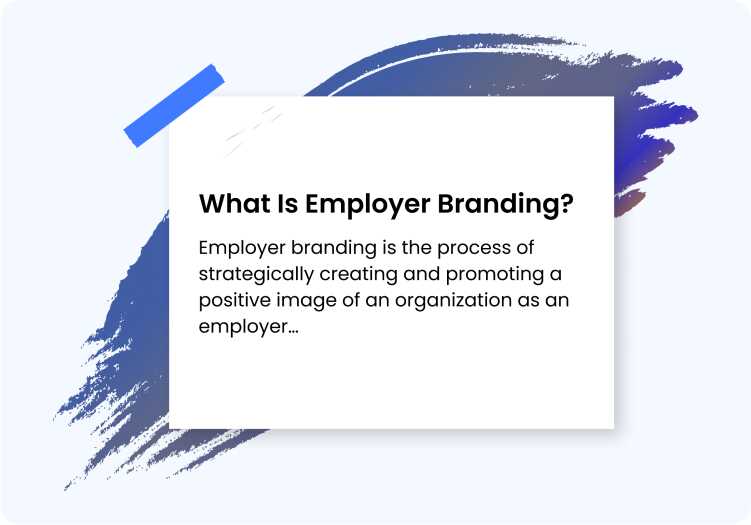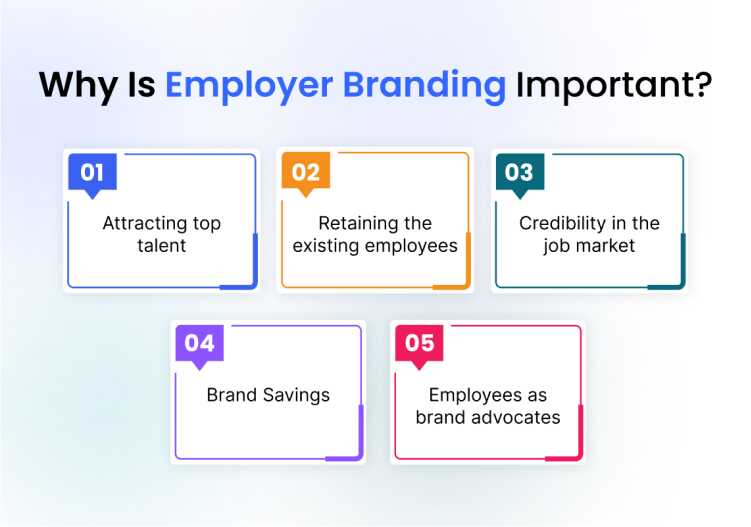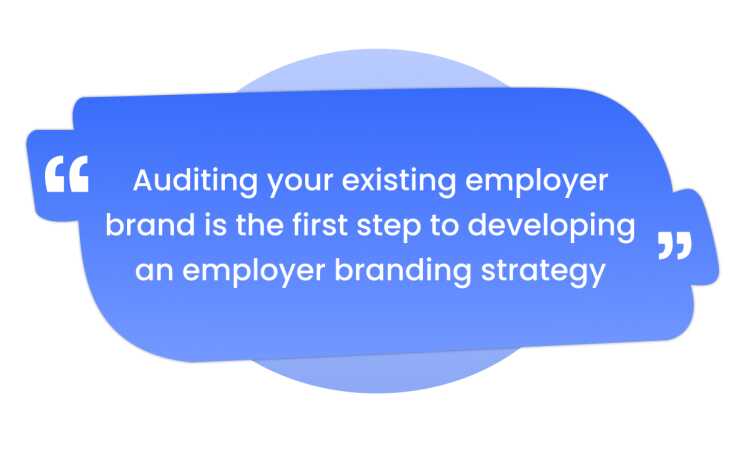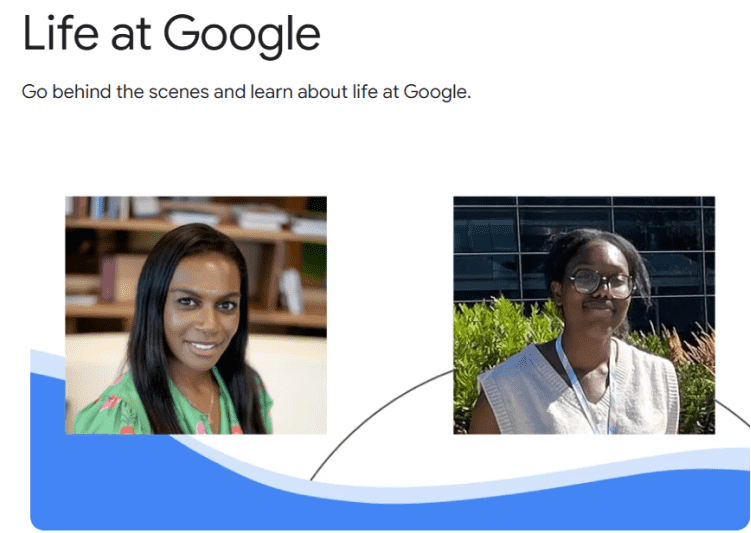Employer Branding: 7 Steps to Build it For Your Business
- June 9, 2023
- 11 mins read
- Listen

Table of Content
Job seekers simply don’t want to work with an organization that has a bad reputation in the market. They also avoid companies whose image is not positive. Why would they risk their career with a brand that is not seen favorably by others?
When the brand image is not favorable, a business can find it challenging to hire and retain the best workforce, resulting in a negative impact on the bottom line. Unless your company is a great place to work, attracting the best talent could be a challenge.
All of this shows how important employer branding is – it puts your business in a good light and acts as a magnet for top minds. The good thing is that you can control how your organization is perceived in the marketplace. It’s all about striking the right balance between the work culture and the perks offered to your employees.
In this blog, we will explore employer branding in detail, understand its benefits for your business, and see how adopting the right strategies could help improve your brand image gradually.
But first, let’s get started with understanding what exactly employer branding is…
What Is Employer Branding?
Employer branding is the process of strategically creating and promoting a positive image of an organization as an employer. It’s done to establish a company as an employer of choice in the job market. This type of branding encompasses everything a business does to position itself as an employer of choice.
The key purpose of employer branding is to showcase the unique values and culture to potential employees with the aim of attracting, engaging, and retaining the best workforce. When an employer conducts its branding, it aims to highlight unique value attributes and opportunities to job seekers and gain an edge over competitors.
Why Is Employer Branding Important?
Every organization wants to grow and achieve success. However, this is not possible unless you have top talent driving the operations. Top talents often prefer to work with reputable organizations, which is why employer branding becomes important.
There are many reasons why employer branding is important.
- Attracting top talent: The job market is highly competitive, and every company wants to hire the best candidates. Top candidates, on the other hand, prefer working with organizations that have a positive reputation in the market and offer growth opportunities.
- Retaining existing employees: Employees show a sense of loyalty and commitment only when they find themselves to be a good fit with the organization’s values and culture. Companies that invest in employer branding often have higher employee retention rates.
- Credibility in the job market: Potential job seekers are more likely to be interested in organizations that have an established employer brand. They prefer to work in a place where employees are valued, and a positive work culture exists.
- Brand savings: Companies with a poor employer brand are less likely to attract the best candidates. In fact, they may need to spend more to attract the desired talent pool. Additionally, such organizations may incur further expenses to retain hired employees. Working on the employer brand can help save these additional costs.
- Employees as brand advocates: When employees are proud of the values and culture promoted by their organization, they engage in word-of-mouth marketing and refer the brand to others. They become brand advocates, contributing to the organization’s reputation in the market.
Steps to Building Employer Branding Strategy
A robust employer branding strategy is critical to higher talent acquisition and retention. It helps you market your company to potential job seekers and present a positive image in front of the world.
There are various critical elements to a successful employer branding strategy for any business across industries, including –
Define Your Employer’s Branding Goals
The first step to a well-established employer branding strategy is to define the goals. Whether you want this strategy to help attract more job applicants or get more quality candidates, there has to be a clear goal to follow.
Aside from hiring the best talents, many organizations also need a successful employer branding strategy to boost online engagement and candidate engagement. Increasing brand awareness could also be a target that you can meet with the employer branding strategy.
When your company has positive employer branding, it could also help build trust with the existing employees. Whether you want more visitors to your job site or want to increase referral rates, everything should be clear from the start to benefit from the employer branding strategy.
Audit Your Existing Employer’s Brand
Every organization has a unique strategy in place to communicate to the public, job seekers, and current employees. It’s therefore important to audit the existing employer brand and understand where things are right.
This audit will help analyze your organization’s perception and image as an employer. It will audit your brand’s reputation in the job market together with assessing its strengths and weaknesses.
By conducting an audit, you can understand how current employees and potential candidates view your company and how the general public view you as a brand. To audit, you can send out surveys to your employees or do informal interviews.
When you want to audit your employer brand, you should also check social media channels and look at what people are saying about your brand. You can also read reviews on popular employer review sites.
Know Your Employee Value Proposition
Before working on an employer branding strategy, it’s important for an organization to understand why current employees chose them. It’s equally essential to understand the reasons why the existing employees are staying and what they like most about you as an employer.
These questions are key to not only understanding the existing flaws and strengths of your existing branding strategy but of the changes you need to make to the new one. It will also define your Employee Value Proposition (EVP) that you can use to target potential job seekers.
The purpose of understanding the EVP is to know your values, vision, and culture. It can help you devise a strategy in regard to the type of talent tool you need to best match your business philosophy.
Make Your Current Employees Your Brand Advocate
Job seekers are quite smart these days and they know exactly how to identify a reputed organization and how to find out about a bad place to work. They know how inputs and reviews from current employees are way more credible than the management or paid promotion.
That’s why top organizations often leverage their existing employees and make them brand advocates so that potential job seekers can be lured. It’s therefore important to share reviews and testimonials of your existing employees on your website and social channels so that it could have a positive impact on your employer brand.
Rather than wasting money on promotion, you could be strategic about making your employees your brand advocates, and that can play a big part in boosting your employer brand. After all, what employees say can have a great impact on those looking at you as a potential employer.
Review Your Recruitment Process
A flawed recruitment process can work as a deterrent for potential job seekers. If your company does not follow the industry standards with the selection process, it might affect your employer brand more than you think.
When you review the recruitment process, the key is to understand whether or not your organization is able to win the trust of candidates at this stage itself. To win the candidates’ trust, it’s important to be clear and specific with what you offer them and what you expect in return.
Another critical aspect is to keep the entire selection process smooth and timely so that potential candidates can see through the values and culture at this stage itself. Together with maintaining promptness with hiring, your company should ensure a seamless onboarding experience for candidates.
Optimize Your Employer Branding Channels
Online channels are key to success with your employer branding strategy. They enhance your brand’s presence and attract the attention of potential job seekers. With so many different channels around, you should not find it difficult to showcase your organization’s culture and values to candidates.
There should be a strategy to leverage social media platforms so that your company can appear as a favorable job option for candidates. You can use those different channels to promote your employer brand and get in front of the target audience.
Social media, websites, and professional networks are the three online channels that should be used the most to increase your brand. These channels are where potential job seekers visit the most.
Use Storytelling to Boost Your Employer Brand
Storytelling is a powerful tool that can be used to create an emotional connection with job seekers. When storytelling is part of your employer’s branding strategy, it can help you present your organization’s attributes and uniqueness in a memorable way.
You can use the power of real stories and experiences that reflect your company and its ethos. Many organizations create strong narratives and then share them across popular channels to increase engagement with the target audience.
From highlighting the challenges and achievements to showcasing the journeys of your employees, there’s a lot you can tell as a story and capture the imagination of potential job seekers. You can share about key projects handled by your organization, give a glimpse into community involvement and share anything that shows your organization in a good light.
Examples of Employer Branding
It takes continuous effort to achieve the status of a top brand to work with. Some premier organizations have shown how to strategically craft employer branding campaigns to promote and community their values to the world.
Here are some great employer branding examples of esteemed companies –
Google – “Life at Google”:
Google is an employer that everybody wants to align with. They are the top brands to work with. This position however was not achieved overnight. Its “Life at Google” campaign is a great example of how to do employer branding in a subtle manner.
This campaign showcases the company culture and employee experiences. Google makes use of videos, social posts, and blog posts to share employee stories, highlighting the vibrant culture and collaborative work environment. With this kind of branding, Google is successful at communicating its commitment to innovation and great work-life balance.
Airbnb – “Belong Anywhere”:
Airbnb is another top organization that sets an example with its employer branding initiatives. Its campaign, “Belong Anywhere,” focuses on the value of inclusivity and showcases a welcoming and diverse work culture for employees. The company uses videos, social posts, and employee testimonials to not only showcase the diversity of the workforce but also the experiences of the employees.
Microsoft – “WeAreMicrosoft”:
Microsoft pretty much sets standards for anything it does, and its employer branding efforts are no exception. Its “WeAreMicrosoft” has acquired a legendary status in the industry for beautifully showing and celebrating the diverse talent it possesses. The company goes a step further by sharing employee stories and achievements with the world. Its employer branding initiatives are focused on sharing the passions and diversity of the workforce and it has been a huge success across boards.
IBM – “The IBMers”:
IBM not only excels at tech innovation but also at employer branding efforts. Its “The IBMers” campaign is hugely popular for sharing employee stories, experiences, and contributions to innovation. The company uses videos, blog posts, and social media posts to celebrate the creative spirit of its employees and highlight the stimulating work environment that it offers. Seeing the way IBMers work and enjoy, potential job seekers have reasons to want to work there and enjoy the perks and challenges.
Final Thoughts
Hiring and retaining the best talents is never easy for an organization that does not take employer branding seriously. Job seekers are quite evolved and they have options galore. This makes it even more important for employers to focus on consistent branding.
Thanks to the growth in technology, employer branding initiatives are not as costly as they once were and a good strategy can help your organization a lot with branding.
You can sign up with us and test our engagement tools which could prove a great value addition to the way you interact and communicate with your target audience.








